Decorating a wall with a slanted ceiling presents both challenges and exciting opportunities for creativity. While sloped walls and ceilings can add architectural interest and character to a space, they often prove challenging for traditional design strategies. The unique angles may limit furniture placement and create difficulties in hanging artwork or shelves.
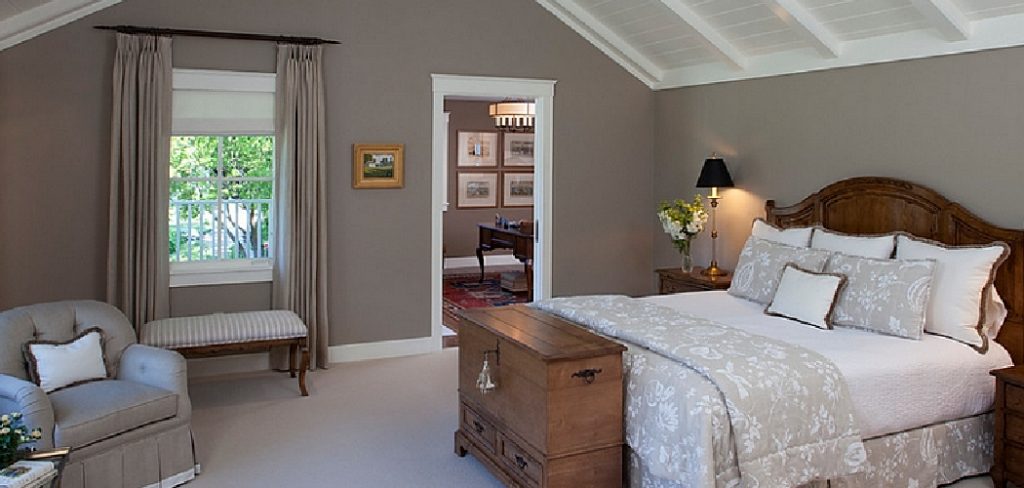
However, these distinctive features also provide a canvas for innovative design solutions. By embracing unconventional lines, one can transform an awkward corner into a cozy reading nook or use the slant to draw the eye upward with a gallery wall.
Additionally, cleverly placed lighting can enhance the ambiance and accentuate the architectural charm. In this guide, you will learn how to decorate a wall with a slanted ceiling effectively, exploring practical tips and creative ideas that utilize these features to maximize the potential of any room with sloped walls.
Maximizing Wall Space with Slanted Ceilings
Decorating a room with slanted ceilings can indeed be a task full of potential. One of the first strategies to consider is using tall furniture to complement the slope. By placing taller pieces, such as bookcases or armoires, on the tallest side of the wall, you can achieve a sense of balance in the room. This approach takes advantage of the wall height and helps create a natural focal point. Custom or built-in shelving that fits the angle of the ceiling can further enhance this effect, providing both storage and aesthetic appeal.
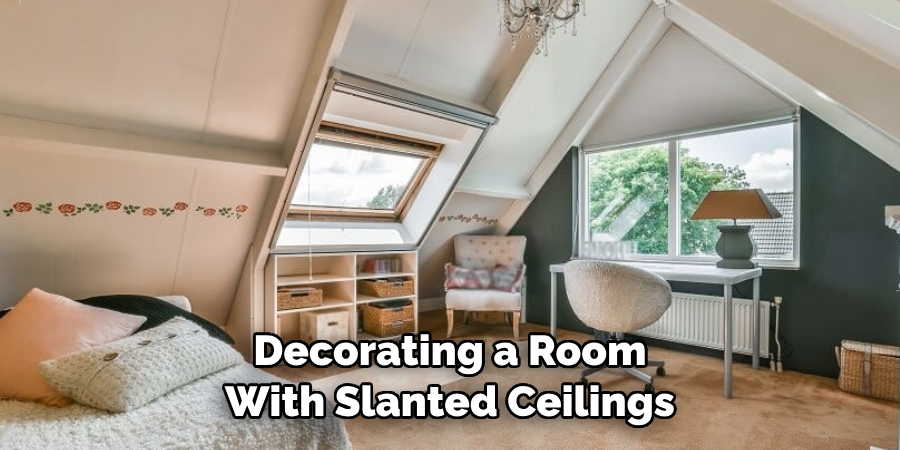
Creating functional zones is another effective way to maximize wall space in rooms with slanted ceilings. Use the lower sections of the room for seating areas, desks, or even storage solutions. Placing functional items like beds or reading nooks along the lower part of the wall helps visually balance the space and ensures every part of the room serves a purpose. This approach also encourages a more intimate and cozy atmosphere, making these areas feel intentionally designed rather than merely adapted to the architectural features.
Mirrors play a crucial role in opening up a space and can be particularly effective in rooms with slanted ceilings. You can create an illusion of a larger space by placing mirrors along the taller walls or even at angles that reflect light. Mirrors help draw attention away from the slant, bringing symmetry and cohesion to the room. The reflective surfaces bounce natural or artificial light around, enhancing the brightness and making the room feel more expansive. When strategically positioned, mirrors can coordinate with other design elements to convey a sense of spaciousness and harmony.
Ultimately, decorating a room with slanted ceilings requires a blend of creativity and strategic planning. By employing tall furniture, creating functional zones, and incorporating mirrors into your design, you can effectively use the space to its fullest potential. This ensures that the architectural quirks of slanted ceilings become a feature rather than a flaw and allows you to craft a living environment that feels both stylish and comfortable. With these strategies, you can transform any space into a harmonious setting that embraces the unique charm of its structure.
How to Decorate a Wall with A Slanted Ceiling: Hanging Artwork and Décor on Slanted Walls
When decorating slanted walls, strategically placing artwork is key to creating a cohesive and engaging visual environment. One effective approach is to hang artwork in clusters on the taller side of the wall. This makes use of the available height and adds balance to the overall space. Arrange art pieces in a diagonal pattern that follows the ceiling’s angle to achieve a seamless look that complements the architectural lines. This can be enhanced by adopting a gallery wall approach, where frames of varying sizes are balanced along the slope, drawing the eye upward while maintaining an organized aesthetic.

Beyond traditional framed art, consider utilizing sculptural and dimensional art pieces that highlight and interact with the uniqueness of slanted walls. Incorporating 3D wall sculptures or textured artwork allows the décor to play with the ceiling’s distinctive shape, adding depth and character to the room. To create focal points, position larger, impactful pieces on the lower part of the slanted wall. This draws attention to the art itself and diverts focus from the wall’s challenging angles, making the space feel intentionally designed.
Floating shelves and ledges offer another versatile solution for decorating slanted walls. Installing floating shelves at staggered heights that parallel the ceiling’s line allows you to introduce a sense of structure and rhythm to the room. These shelves can be styled with plants, small art pieces, or decorative objects to create layers of visual interest. The arrangement allows for personal expression, enabling the space to evolve with changing tastes or seasons.
Incorporating a mix of these strategies allows one to embrace the slanted wall’s potential rather than view it as a limitation. By creating focal points with larger art pieces, choosing dimensional artworks, and leveraging floating shelves, it’s possible to craft a dynamic and visually appealing space. Each of these techniques not only provides practical decoration solutions but also helps to effectively incorporate the architectural quirks of slanted ceilings into the overall design narrative. This thoughtful approach ensures that the room feels harmonious and intentional, with the unique slopes contributing to the room’s character and charm.
Choosing Color and Wallpaper for Slanted Walls
When it comes to choosing colors for slanted walls, the goal is to either enhance the ceiling’s unique slope or subtly downplay it, depending on the desired effect in the room. One effective method to achieve a seamless look is by painting the slanted ceiling the same color as the walls. This approach can visually erase the boundary between ceiling and walls, creating a unified appearance that softly envelops the space. This technique works particularly well with light or neutral shades, which have the added benefit of making the room appear larger and more open.
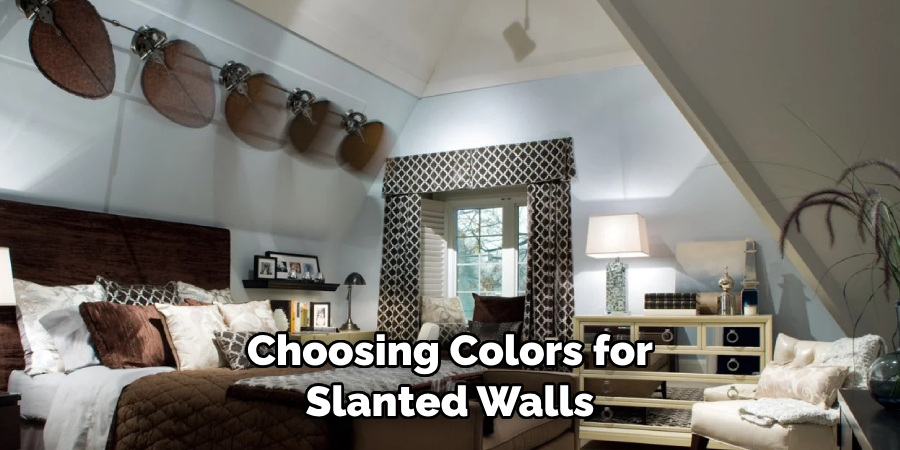
Alternatively, to draw attention to the architectural lines, consider using two different colors—one for the ceiling and another for the walls. Opting for contrasting shades can highlight the room’s unique shape, turning the slope into a standout feature. For instance, pairing a warm, earth-toned wall with a crisp, white ceiling can emphasize the ceiling’s slanted angle while injecting warmth and depth into the room. Dark colors are another option, especially for creating a cozy and intimate environment. When applied to walls or ceilings, deeper hues can add an element of drama, making the space feel deliberately curated and snug.
When it comes to wallpaper, the art lies in selecting patterns and placement wisely to enhance rather than overwhelm. Applying wallpaper to slanted walls and ceilings can be challenging, but it adds an interesting texture and design element when done thoughtfully. Choosing patterns that align with the slant, such as diagonals, stripes, or even nature-inspired motifs, can complement the room’s geometrical features. These patterns should work harmoniously with the ceiling’s angles, providing a pleasant visual flow throughout the space.
Consider applying wallpaper only to certain accent areas to avoid a cluttered appearance. For example, placing it on the tallest part of the wall can act as an anchor, drawing the eye and serving as a focal point without overpowering the room. This tactic is particularly effective when the wallpaper serves as a contrast against the painted sections, adding layers of interest without disrupting the room’s overall balance. By carefully selecting both the color and placement of wallpaper, it becomes possible to celebrate the architectural quirks of slanted walls while ensuring the room maintains a coherent, aesthetically pleasing design narrative. This thoughtful approach ensures the space feels both stylish and harmonious, embracing its unique dimensions authentically.
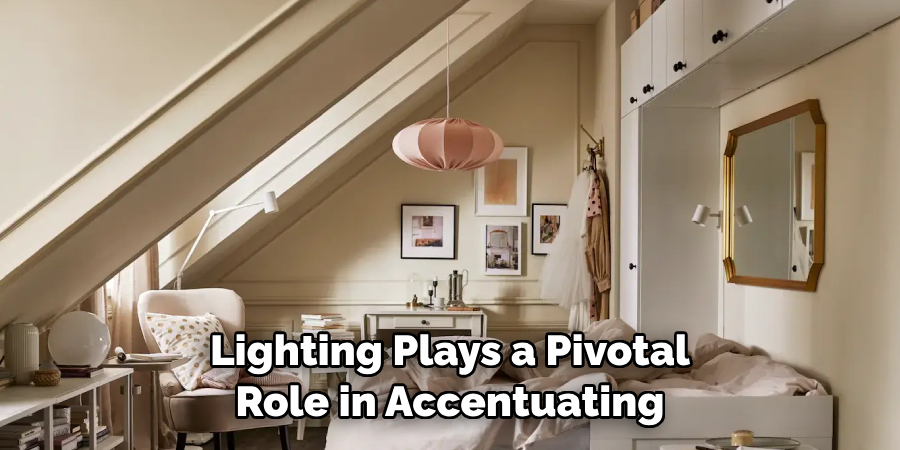
Incorporating Lighting for Sloped Ceilings
Lighting plays a pivotal role in accentuating the features of a sloped ceiling, transforming potential design challenges into creative opportunities. By strategically choosing and placing lighting fixtures, it’s possible to draw attention to the ceiling’s height, enhance architectural features, and create a warm and inviting atmosphere within the room.
Installing Pendant or Track Lighting
Pendant lighting is an excellent choice for sloped ceilings, as it draws the eye upward, emphasizing the height of the slope and creating a sense of spaciousness. When installing pendants, choose fixtures with adjustable cords or chains to accommodate the incline and ensure even light distribution. Grouping multiple pendants at varying heights can add depth and interest, making the slope a focal point rather than a constraint.
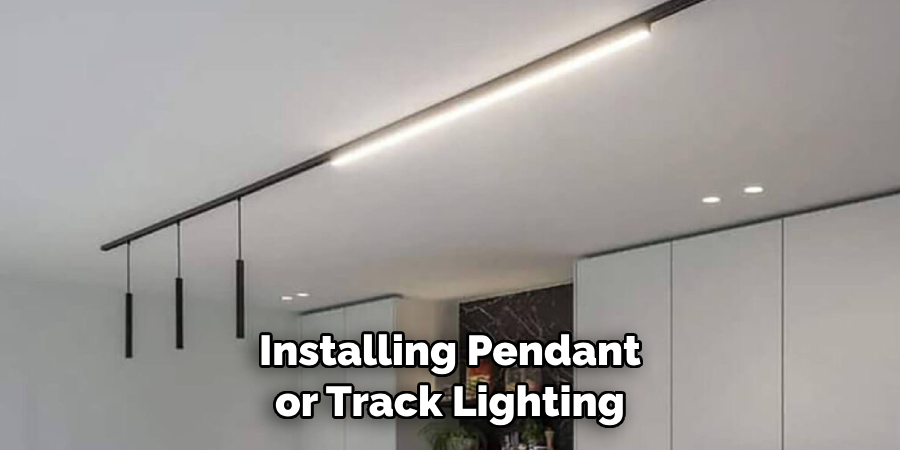
Track lighting offers another versatile solution, particularly in spaces where you want to highlight specific areas or décor. By installing a track parallel to the slope, you can direct the light to different parts of the room or accentuate artwork, architectural details, or shelving. Track systems with adjustable lights provide flexibility, allowing you to change the focus as the need arises or as your décor evolves.
Using Wall-Mounted Lights
Wall-mounted sconces and adjustable lamps effectively brighten shadowed areas created by sloped ceilings. These fixtures can be directed at various angles to fill the space with even light, ensuring functionality as well as aesthetic appeal. For optimal effect, select sconces that can be tilted or have a swivel arm, providing versatility in targeting light where it’s most needed, such as reading or work areas.
Another clever use of wall-mounted lights is in accentuating artwork or décor on slanted walls. Position them strategically to highlight artistic displays or collections, thus integrating lighting into the overall design narrative and enhancing the room’s visual coherence.
Adding String Lights or LED Strips
For a more whimsical or cozy ambiance, consider using string lights along the line of the slant. These can create a soft, intimate glow that follows the angles of the ceiling, adding character and charm. String lights are easy to install and can be repositioned as needed, making them a flexible option for those who enjoy frequently updating their décor.
LED strip lights offer a modern alternative, providing smooth, ambient lighting when installed along the slope of the ceiling. These strips are available in various colors and intensities, allowing for customization to match the desired mood or theme of the room. By placing LED strips at the ceiling’s angle, you can achieve an even and gentle illumination, highlighting sloped spaces’ architectural uniqueness.
Incorporating these lighting ideas not only enhances the aesthetic of a room with sloped ceilings but also ensures that every corner is well-lit and functional. By utilizing pendant and track lights, wall-mounted fixtures, and creative string or LED options, the perceived limitations of sloped ceilings can be transformed into unique design elements that contribute to a harmonious and engaging living environment.
Conclusion
Slanted walls and ceilings offer a myriad of opportunities for creative decoration, transforming what might initially seem like a design challenge into a distinctive feature of any room. By embracing the angles, homeowners can utilize the unique architecture to showcase their style with inventive solutions. Consider using how to decorate a wall with a slanted ceiling as a canvas for creativity through strategic paint, impactful lighting, and artful wallpaper placement.
Balance is key—combine functionality with aesthetic appeal by selecting decor that complements the room’s purpose while enhancing its visual flow. Thoughtful lighting, like pendants or wall-mounted sconces, can illuminate the space effectively, underscoring its unique charm. Ultimately, the goal is to highlight and celebrate the architectural quirks, turning them from mere structural elements into an integral part of a harmonious and engaging living environment.
About
Safety Fic is a distinguished figure in the world of Diy design, with a decade of expertise creating innovative and sustainable Diy solutions. His professional focus lies in merging traditional craftsmanship with modern manufacturing techniques, fostering designs that are both practical and environmentally conscious. As the author of diy, Safety Fic delves into the art and science of Safety Fic-making, inspiring artisans and industry professionals alike.
Education RMIT University
(Melbourne, Australia) Associate Degree in Design (Safety Fic) Focus on sustainable design, industry-driven projects, and practical craftsmanship. Gained hands-on experience with traditional and digital manufacturing tools, such as CAD and CNC software.
Nottingham Trent University
(United Kingdom) Bachelor’s in diyfastly.com and Product Design (Honors) Specialized in product design with a focus on blending creativity with production techniques. Participated in industry projects, working with companies like John Lewis and Vitsoe to gain real-world insights.
Publications and Impact
In diy, Safety Fic his insights on indoor design processes, materials, and strategies for efficient production. His writing bridges the gap between artisan knowledge and modern industry needs, making it a must-read for both budding designers and seasoned professionals.
